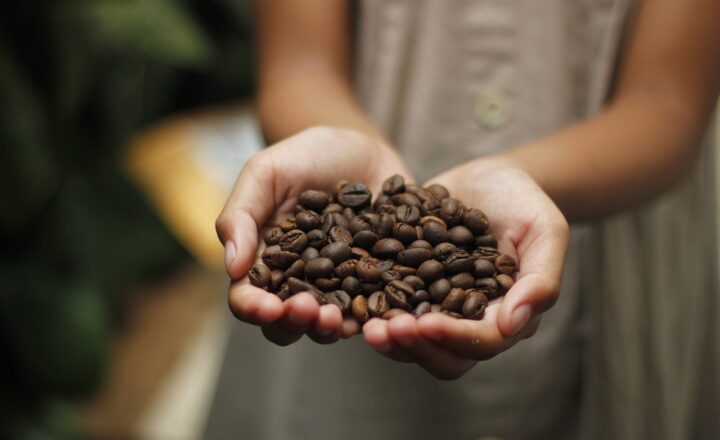The Different Types of Coffee Grinders and How They Impact Your Brew
November 12, 2024

Coffee, beloved by millions around the world, is a ritual that brings comfort, focus, and energy to our daily lives. But the secret to making a perfect cup of coffee lies not just in the beans, but in how we grind them. With the right grinder, you can elevate your brewing experience, ensuring that every sip is rich, flavorful, and utterly satisfying. In this article, we’ll delve into the different types of coffee grinders available, their mechanisms, and how they influence your brew.
1. Why Grinding Matters
The coffee-making process begins long before the brewing stage. Grinding is pivotal because the grind size affects how well the water extracts flavors from the coffee grounds.
– Coarse Grind: Best for methods like French press and cold brew, where coffee grounds are steeped in hot water.
– Medium Grind: Suitable for drip coffee makers and pour-over methods. This grind allows for both optimal extraction and pleasant taste.
– Fine Grind: Ideal for espresso machines, where pressure and temperature require a finer consistency for a rich and creamy espresso shot.
– Extra Fine Grind: Used for Turkish coffee, where the coffee is finely powdered and brewed directly in the pot.
Understanding the significance of grind size helps coffee enthusiasts make informed choices when selecting the right grinder.
2. Types of Coffee Grinders
There are two main types of coffee grinders: blade grinders and burr grinders. Each type has its advantages and disadvantages, and the choice often comes down to personal preference and budget.
2.1 Blade Grinders
Blade grinders are the most common type found in households. They consist of a motorized base with a spinning blade that chops coffee beans into finer particles.
– Pros:
– Cost-Effective: Generally cheaper than burr grinders, making them accessible for beginners.
– Portable: Lightweight and easy to store, perfect for travel.
– Versatility: Can be used to grind spices and herbs, not just coffee.
– Cons:
– Inconsistent Grind Size: The blade can create uneven particle size, which can affect extraction.
– Heat Generation: The blades can emit heat which may affect the beans’ flavor by burning them.
In short, blade grinders offer convenience and affordability but can compromise on consistency, crucial for the perfect brew.
2.2 Burr Grinders
Burr grinders use two revolving abrasive surfaces, or burrs, to crush the beans into a uniform size. There are two types of burr grinders:
1. Flat Burr Grinders: Use parallel discs to grind coffee.
2. Conical Burr Grinders: Feature a cone-shaped burr inside a ring burr, providing a more consistent grind.
– Pros:
– Uniform Grind Size: Ensures even extraction, enhancing the coffee’s flavor profile.
– Precision: Many models offer adjustable grind settings, allowing users to choose their desired grind size easily.
– Minimal Heat Generation: Better preservation of the beans’ oils and flavors during the grinding process.
– Cons:
– Higher Cost: Quality burr grinders can be significantly more expensive than blade grinders.
– Size and Bulkiness: Tend to be larger and heavier, making them less portable.
Burr grinders are the preferred choice for serious coffee enthusiasts who are eager to explore the nuances of their brews.
3. Coffee Grinding Methods
Beyond the type of grinder, how you grind your coffee can also influence the flavor. Here are a few methods:
– Single-dose Grinding: Grinding just enough beans for one brew each time preserves freshness, but can be more time-consuming.
– Batch Grinding: Grinding larger quantities at once can be convenient for prepping coffee in advance, though it may include whole beans exposed to oxidation over time.
– Manual Grinding: Hand grinders require more effort but allow for a greater appreciation of the process and potential for a consistent grind, depending on the quality of the grinder.
Knowing your preferred brewing method will determine how you might choose to grind your coffee beans effectively.
4. Choosing the Right Grinder for You
Each coffee drinker has unique needs and expectations from their grinder. Here are some key considerations when making your choice:
– Budget: Determine how much you are willing to spend. If you’re just starting out, a basic blade grinder might work, but invest more for better quality in the long run.
– Brewing Method: Consider your preferred brewing method and select a grinder that accommodates your needs. For espresso lovers, a high-quality burr grinder is recommended.
– Convenience vs. Quality: Some people prioritize convenience; others want to dive deep into the coffee grinding experience. The right grinder should reflect your personal approach to coffee.
By defining your needs, you can select a grinder that aligns with your coffee journey.
5. Conclusion
In summary, the type of coffee grinder you choose has a profound impact on your brewing process and the flavors you can extract from your coffee beans. Whether you choose a blade grinder for convenience and budget or invest in a burr grinder for precision and quality, understanding the differences will enhance your coffee experience.
Experimenting with different grind sizes will allow you to fine-tune your brewing technique to achieve the perfect cup. So, take your time, grind your beans, and enjoy each rich embrace of coffee’s complex flavors with the confidence that your choice of grinder has served you well.







